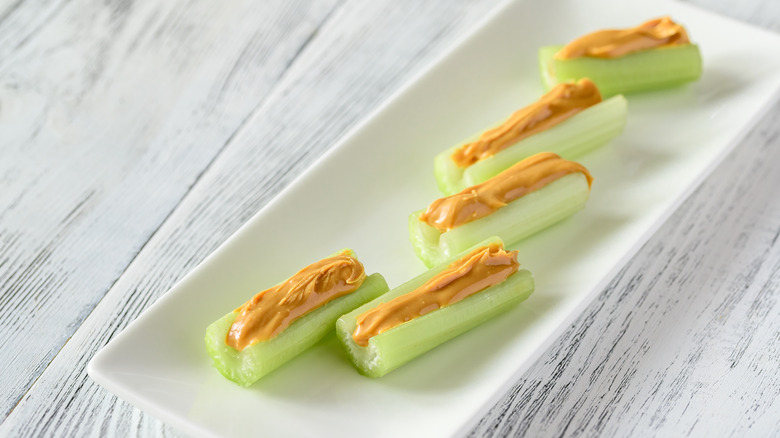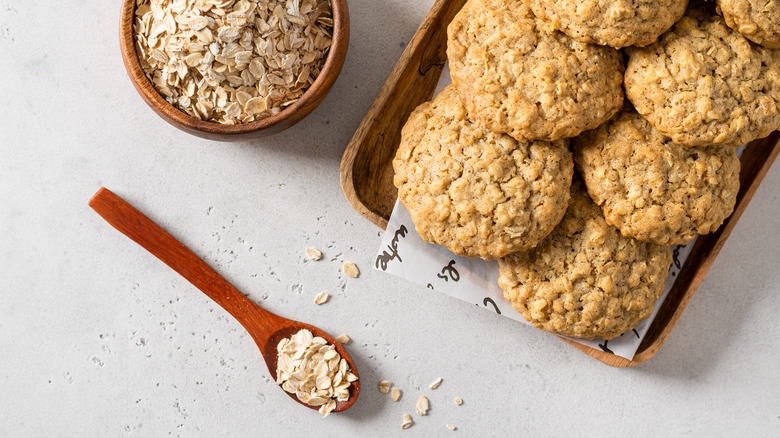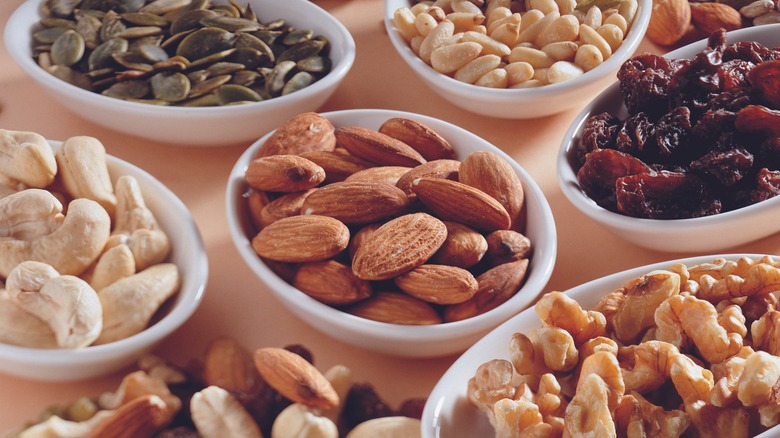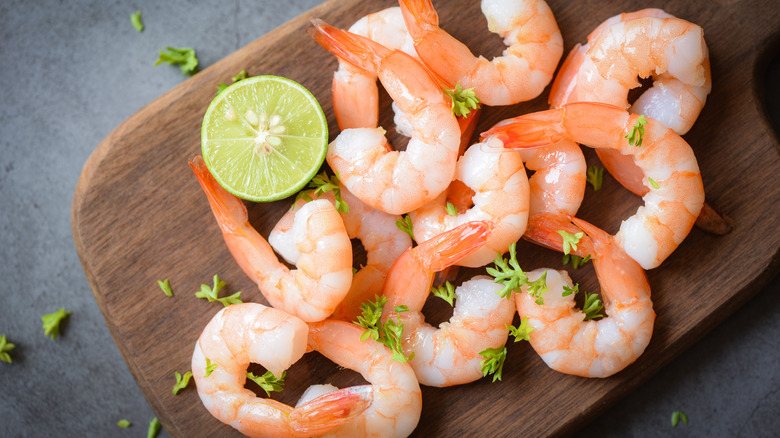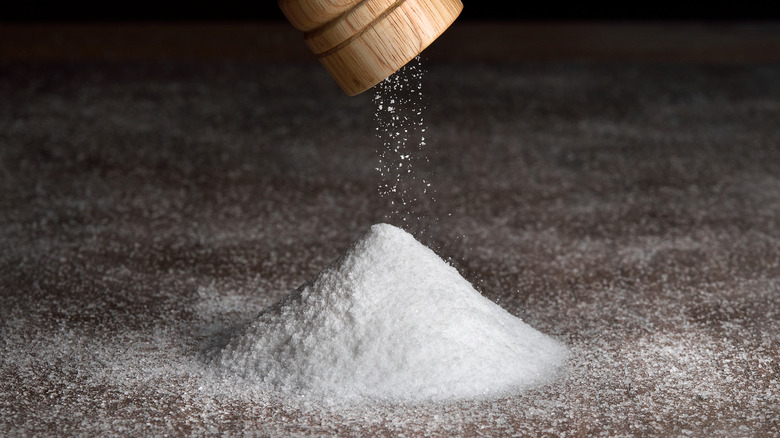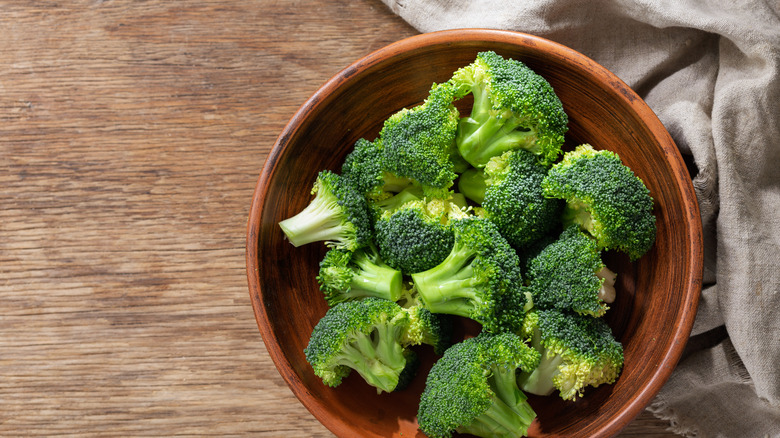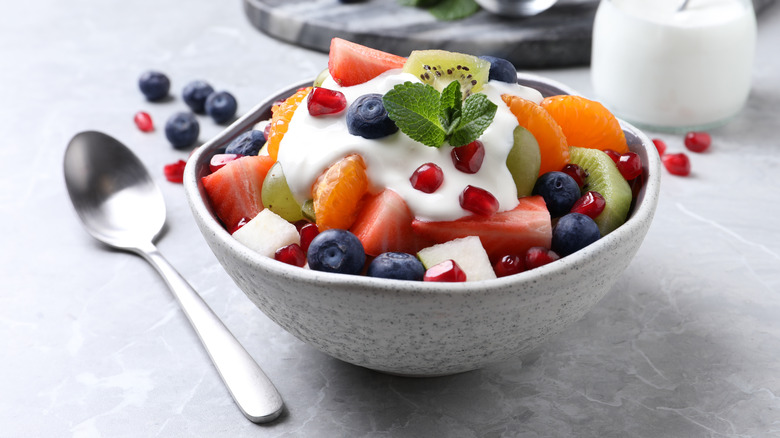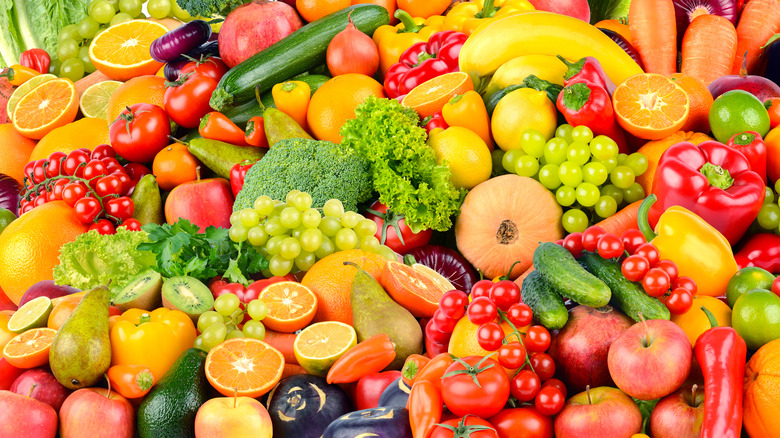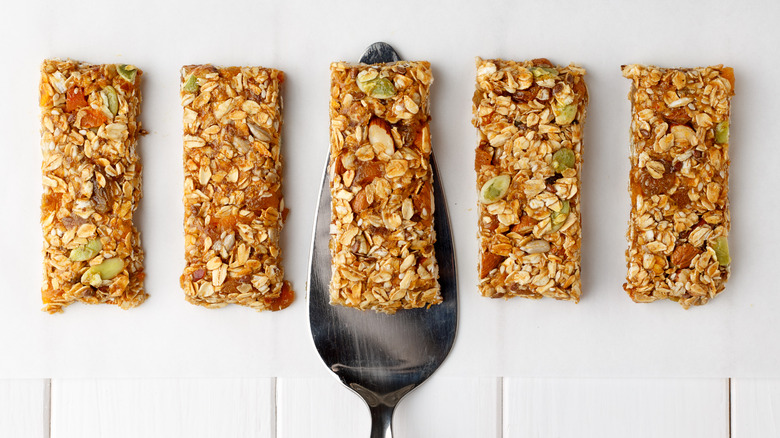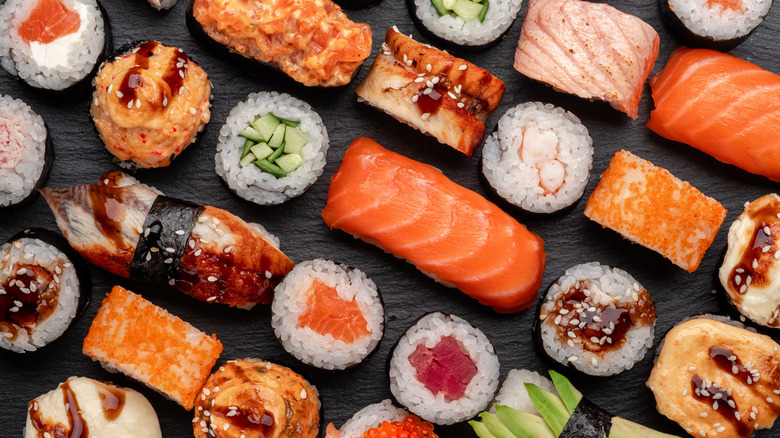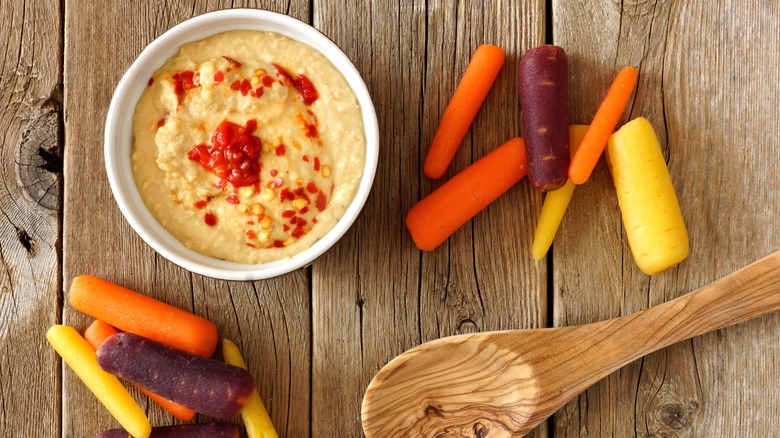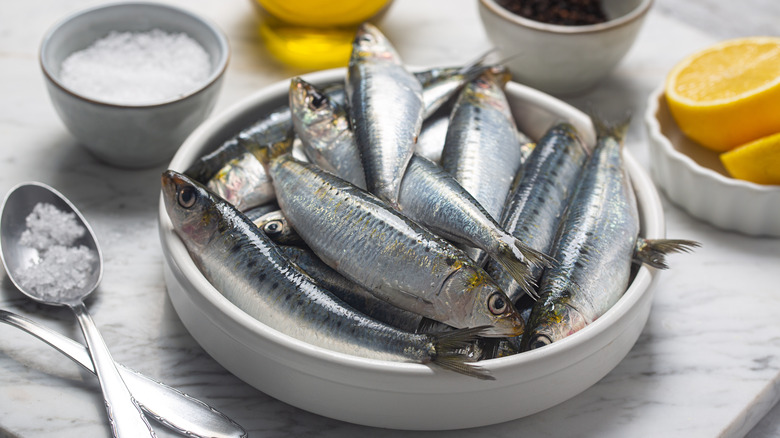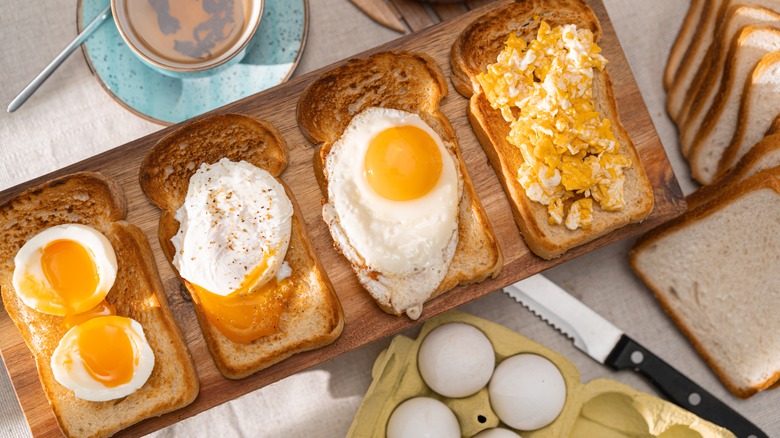Healthy Snacking Habits For People Over 50
According to a review in Advances in Nutrition, you may be able to delay or prevent age-related disease with lifestyle changes, one of which is diet. This can mean greater longevity, including an extension to your healthy and active years. The result is more time with family and friends and increased participation in meaningful activities, as well as living in comfort and wellness.
The World Health Organization (WHO) identifies four primary risk factors for noncommunicable disease: lack of physical activity, tobacco use, harmful alcohol use, and unhealthy diet. Noncommunicable diseases include cancer, heart disease, diabetes, stroke, and chronic lung disease, and account for an estimated 70% of deaths worldwide.
Chronic disease doesn't have to be an inevitable part of aging. Whether it's by smoking cessation, an extra walk every week, or fewer alcoholic drinks, you can make your later years better ones. Dietary changes can have a significant impact, and even small modifications can bring noticeable benefits. Building healthy snacking habits is an easy place to begin.
Protein
Protein is known for its role in tissue growth and maintenance, but it has several other important functions. Healthline mentions chemical messaging, cellular structure, pH regulation, and fluid balance as a few of the many important roles this macronutrient plays in optimal health. As you age, your need for dietary protein increases. This is due to a variety of factors such as a higher chance of infection, inflammation, chronic disease, surgery, and injury, all of which need protein for their remedy. If there's not enough in your diet, your body will take the protein it needs from your muscles (via Consumer Reports).
Not only is protein healthy, but it also comes from both plant and animal sources to suit any dietary preference. Portable protein-rich snack options include trail mix, jerky, roasted chickpeas, and protein bars (via Healthline). Other simple and satisfying choices include hard boiled eggs, Greek yogurt, peanut butter on celery sticks, nut butter on whole grain toast, cheese slices, and pumpkin seeds.
Fiber
Fiber, or roughage, is components of plant food that your digestive tract doesn't break down or absorb. Instead, it passes through your bowels and exits your body. Dietary fiber offers many benefits including promoting digestive regularity, and reducing your risk of heart disease, diabetes, and certain types of cancer (via Mayo Clinic). Fiber can also help you achieve a healthy body weight by increasing satiety so you're less likely to overeat. Harvard Health Publishing recommends getting dietary fiber from whole food sources rather than supplements, which don't have the same nutritional profile as fruits, vegetables, legumes, and whole grains.
If you're trying to increase your dietary fiber, there's a wide range of nutrient-dense foods to choose for snacks. If you like fruit, Healthline recommends fiber-rich options like pears, strawberries, apples, avocado, bananas, and raspberries. Snackable fiber-filled vegetables include carrots, broccoli, and tomatoes. If you enjoy baking homemade treats like cookies, considering using oats, which contain beta glucan, a soluble fiber that helps to manage blood sugar and cholesterol. Choosing air-popped popcorn for movie night is another tasty way to increase your fiber intake.
Complex carbohydrates
According to MedlinePlus, both simple and complex carbohydrates provide your body with glucose, a source of fuel readily available as blood sugar or stored in muscle and liver tissue for later use. However, it's complex carbohydrates that are often found in nutrient-dense foods containing vitamins, minerals, and fiber. Simple carbohydrates, or refined sugars, are empty calories without nutritional value. Since you need fewer calories as you age (per WebMD), it's preferable that the carb calories you snack on are the complex, nutrient-rich kind.
Medical News Today explains that your body digests simple carbohydrates quickly, which means the energy they produce is short-lived. Complex carbohydrates provide longer lasting energy, so you're not snacking more than necessary. Add vegetables, nuts, and legumes to your list of this type of carb, as well as foods made with oats, barley, buckwheat, and brown rice. Try roasted chickpeas, or hummus that contains chickpeas as a dip for baby carrots, for a nutritious complex carb snack.
Seafood
AARP lists seafood as a recommended superfood to eat after age 50, when your calorie requirements decline but your nutritional needs stay the same or increase (via Healthline). Fish provides lean protein, an important macronutrient that's protective against some of the effects of aging. It also contains vitamin B12, an essential nutrient important for the function of the brain, nervous system, and formation of red blood cells (via WebMD). Dietary seafood also provides you with omega-3 fatty acids, which WebMD indicates may protect against heart disease. Aim for two to three servings of seafood per week, which according to AARP can reduce your mortality rate from chronic disease by around 17 percent.
Seafood snacks can be quick and easy, like canned salmon on rice cakes. Or you can browse appetizer recipes and explore options like chilled and flavorful shrimp cocktail, crispy breaded calamari, or seasoned crab-stuffed mushrooms. If you'd rather keep it simple, lightly seasoned shrimp tossed in oil then air fried is a snack that's ready in 15 minutes.
Less salt
Sodium is an essential mineral. Salt is a combination of sodium (40%) and chloride (60%). Your body needs around 500 milligrams of sodium each day to maintain a proper fluid-mineral balance, use your muscles, and conduct nerve impulses (via Harvard T.H. Chan School of Public Health). However, too much sodium is harmful rather than helpful, and may increase your risk of high blood pressure, stroke, and heart disease. One teaspoon of fine, iodized table salt contains approximately 2,300 milligrams of sodium. The U.S. Food & Drug Administration (FDA) estimates that 70% of the sodium you consume comes from packaged foods and restaurant meals, and the average U.S. citizen takes in about 3,400 milligrams of salt each day.
An easy and effective way to reduce your sodium consumption is to choose whole fruits and vegetables for snacks. If you like dip with vegetables, try making homemade guacamole without the salt that many recipes suggest. You may find that the other ingredients like onion and garlic are flavorful enough.
Calcium
Bone loss is a common part of aging. It can lead to osteoporosis and an increased vulnerability to injuries like fractures. AARP recommends ensuring your calcium intake is adequate, as well as making sure you're getting enough vitamin D to aid in calcium absorption. The American Academy of Orthopedic Surgeons (AAOS) states that after age 50, women should consume 1,200 milligrams of calcium daily. Between ages 51 and 70 years the AAOS recommends that men have 1,000 milligrams daily, and after age 70 they should increase to 1,200 milligrams of calcium daily. Excess calcium in supplements can become arterial plaque, so it's preferable to get your calcium from food sources.
Stocking up on dairy snacks like cheese and yogurt is an effective way to ensure you get enough calcium each day. Other food sources include leafy green vegetables like kale, broccoli, salmon, tofu, and fortified cereals. If you have a sweet tooth, ice cream and pudding are also calcium sources, but include extra calories. If you enjoy a liquid snack in the form of a glass of milk, it's useful to know that the higher the fat content, the less calcium the milk contains.
Less refined sugar
Healthline lists multiple adverse health effects of excess sugar consumption, including increased risk of weight gain, depression, heart disease, type 2 diabetes, cancer, fatigue, and fatty liver. They also cite sugar's accelerating effect on cellular and skin aging. To add even further merit to the idea that you should cut back, an review published in GeroScience added inflammation and mitochondrial dysfunction to the list of sugar's perilous impacts.
This isn't good news if you're a habitual sweet treat snacker. If you enjoy sugary soda, you might not be keen to hear about the study published in Alzheimer's & Dementia that found a link between higher intake of sugary beverages and markers of preclinical Alzheimer's disease.
The good news is that you may be able to still enjoy some sweet snacks if you choose healthier options. Whole fresh fruit is packed with nutrients as well as flavor and can be eaten on its own or used as a topping to add sweetness to yogurt or rolled oats. Instead of store-bought, sugary salad dressings, opt to make your own at home with olive oil and vinegar. And when shopping for items like nut butters, marinades, and condiments, try to choose options with no added sugars.
Colorful produce
Stanford Medicine describes phytochemicals as substances that protect plants from fungi, bacteria, and viruses. When you eat those plants, the phytochemicals they contain may also protect you from heart disease, cancer, diabetes, and high blood pressure. The color and type of food determines the action of the phytochemicals present, which is why you may have heard the expression "eat the rainbow." This means the more color variations there are in the produce you eat, the larger the list of beneficial compounds you'll consume.
According to the Department of Nutrition, University of California, Davis, there are more than 10,000 known phytochemicals, and many more that haven't yet been identified. The largest phytochemical category is flavonoids, which have antiviral, cytotoxic, anti-inflammatory, antimicrobial, and antioxidant properties.
If you choose an apple for a snack, you may experience the inflammation reduction effects of the flavonoid quercetin. The anthocyanin in berries reduces blood pressure and arterial stiffness and boosts your immune system by increasing your production of natural killer cells. The more plant colors you consume, the more phytochemical benefit you'll derive.
Mindful eating
Mindfulness is being aware and accepting of the present moment. When you apply this principal to food, you're thinking about what you're eating (via Harvard Health Publishing). You can be mindful about any kind of meal or snack, regardless of its nutritional value. If you're mindful of the heaviness of a greasy cheeseburger, you may be less inclined to eat them as often.
In addition to helping you make healthier choices, mindfulness can help you identify why you feel the urge to snack. You might be hungry. Alternatively, you could be stressed or tired (via WebMD). Even seeing tempting advertising photos of food may prompt you to eat when you don't need to. You might even be thirsty: According to the Polycystic Kidney Disease Foundation, thirst signals are weaker than hunger, and as many as 37% of people mistake the former for the latter.
So how can you snack mindfully, so that you won't overindulge? Harvard Health Publishing recommends several strategies, starting with shopping using a list and thinking about what you put into your grocery cart. Eating regularly to control your hunger may reduce the chance that you'll impulsively eat when you're ravenous. Appreciate your food, eat slowly, and savor the experience with all your senses.
Less processed food
Processed food is convenient and often tasty. It's tidily packaged, like energy bars or instant noodles in cups. You can buy it in bulk to save money without worrying about spoilage. However, processed food also contains ingredients you may be trying to reduce in your diet, like saturated fat, excess salt, and refined sugar (via Medical News Today). This type of convenience food often lacks the beneficial fiber and nutrients contained in fresh, whole foods like fruits and vegetables. Processed food can lead to unwanted issues like weight gain, heart disease, and cerebrovascular disorders. A study published in The BMJ found that consuming more than four servings daily of ultra-processed foods was associated with a 62% increased risk for all cause mortality.
Cutting back on processed food might seem like you're giving up some of your favorite snack items. However, there may be homemade replacements that you prefer once you've tried them. For example, if you make your own granola bars, you can customize the ingredients according to your personal preference. You can even boost the nutritional value by adding ingredients like quinoa (via Healthline).
Healthy fats
Dietary fat isn't all bad — in fact, some of it is necessary to absorb certain vitamins (via MedlinePlus). Unsaturated fat is the kind you can safely include in your diet, according to the National Institutes of Health (NIH). Oils like peanut, canola, safflower, olive, and soybean are liquid at room temperature and contain unsaturated fat.
Omega-3 polyunsaturated fatty acids (n-3 PUFAs) may reduce the risk of adverse cardiovascular events, according to a study published in Journal of Atherosclerosis and Thrombosis. The study indicates that n-3 PUFAs help your blood vessel lining function better. They also reduce vascular inflammation, reduce lipid accumulation, and recruit immune cells called macrophages to slow the build up of arterial plaque. Intake of n-3 PUFAs may lower blood levels of a protein called beta-amyloid, which forms the brain clumps characteristic of Alzheimer's disease (via Harvard Health Publishing). The NIH lists cancer, Alzheimer's disease, and age-related macular degeneration as diseases that n-3 PUFAs may offer some protection against.
While you can take an omega-3 supplement, researchers indicate that it's better to obtain these healthy fats from food sources. This enables you to access the additional nutrients found in the food but not in the supplements. Walnuts are a good source of n-3 PUFAs, as are types of cold-water fish like tuna and salmon. If these aren't your favorite snack choices, the NIH suggests looking for other foods that are fortified with omega-3 fatty acids, such as certain types of yogurts, eggs, soy beverages, or juices.
Fewer calories
Age-related muscle loss and reduced physical activity are two reasons people need fewer calories as they get older (via Healthline). However, your nutrient needs are just as high as they were when you were younger — or even higher — making it important not to squander snack calories on nutritionally lacking choices. According to WebMD, your caloric requirements decrease after age 50, and are dependent on your activity level. For women, WebMD recommends daily caloric limits of 1,600 (sedentary), 1,800 (moderately active), and 2,000-2,200 (active). For men, those daily recommended limits are 2,000 (sedentary), 2,200-2,400 (moderately active), and 2,400-2,800 (active).
To achieve your goal of staying within your caloric range, it helps to know which foods to eat in small portions. For example, peanut butter is high in calories, so if you're pairing it with apple slices it's advisable to measure your total peanut butter serving before dividing it among the pieces of apple. WebMD offers suggestions for a wide range of healthy snacks under 100 calories, including microwave popcorn, cottage cheese and cantaloupe, baked apple, and baby carrots with hummus dip.
Vitamin D
A study published in the Journal of Aging and Gerontology explains that as you age, your body is less able to synthesize vitamin D cutaneously (through your skin). The authors also cite reduced dietary consumption as a factor in vitamin D deficiency, which they indicate is associated with diseases of aging including depression, cognitive decline, cardiovascular disease, osteoporosis, cancer, high blood pressure, and type 2 diabetes. The Harvard T.H. Chan School of Public Health adds that vitamin D helps your body absorb calcium and phosphorus, may reduce cancer cell growth and inflammation, and aids with infection control.
To ensure you're not deficient in this important nutrient, you can take a daily supplement or choose snacks containing vitamin D. Options include salmon, sardines, and fortified foods like orange juice, cereal, and milk. There's also small amounts of vitamin D in cheese, eggs, and beef liver. Some mushrooms sold in grocery stores contain vitamin D2 because producers have intentionally exposed them to extra ultraviolet light. There aren't as many food sources available for vitamin D as there are for other nutrients, which is why your doctor may suggest that you take a supplement.
Vitamin B12
Mount Sinai cautions that a B12 deficiency can leave permanent nerve damage if left untreated longer than six months after symptoms begin. Symptoms of a B12 deficiency include fatigue, pale skin, shortness of breath, irritability, and loss of appetite. Mount Sinai lists confusion, loss of balance, hallucinations, psychosis, and hand and feet tingling or numbness as among the symptoms of nerve damage. To illustrate the importance of this vitamin, consider the fact that you need it to make red blood cells, without which your blood could not transport oxygen throughout your body (via the American Red Cross).
Some people are unable to make a protein called intrinsic factor, which your body needs to absorb vitamin B12 (via Johns Hopkins Medicine). Other deficiency risk factors include autoimmune disease, partial or total stomach or intestine removal, irritable bowel disease, vegan diets, and increasing age. Vitamin B12 is easier to get through animal sources, like eggs and meat, but you can also find it in other sources like fortified nutritional yeast and non-dairy milk. If you follow a vegan or vegetarian diet, you'll need to purposefully include these fortified items in your diet to ensure you get enough vitamin B12 (via Mount Sinai). Otherwise, you can bolster your B12 intake through snack items like peanuts, oranges, and chickpeas (via Johns Hopkins Medicine).


